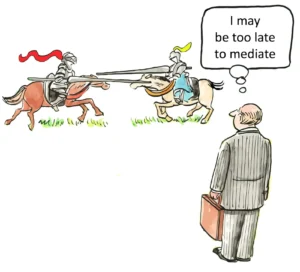How is construction law evolving with new building technologies?
The question of how construction law is evolving with new building technologies is no longer a matter of speculation but a daily reality for attorneys, contractors, and property owners. The construction industry, historically slow to embrace change, now finds itself at the crossroads of innovation and regulation. As new technologies-from Building Information Modeling (BIM) to drones, 3D printing, and artificial intelligence-reshape the way we design, build, and manage structures, the legal frameworks governing these processes must adapt in kind. This evolution is not driven by novelty for its own sake but by necessity: efficiency, safety, sustainability, and risk management all demand a legal system that keeps pace with technological progress.
At the heart of this transformation is the recognition that construction law compliance is no longer a static checklist but a dynamic, ongoing process. Contractors and developers face a rapidly changing landscape of building technology regulations, from smart building codes to data privacy mandates. The emergence of smart buildings-structures equipped with interconnected sensors, automation systems, and data analytics-has introduced new legal complexities. Ownership of data, cybersecurity obligations, and the allocation of liability in the event of system failures are now central concerns. The legal profession must grapple with questions such as: Who owns the data generated by a building’s IoT devices? What happens if a smart HVAC system malfunctions and causes property damage? These are not hypothetical scenarios but real-world issues that demand clear contractual language and regulatory foresight.
Building Information Modeling (BIM) has become a cornerstone of modern construction projects. BIM’s ability to create detailed, collaborative digital representations of buildings streamlines project management and reduces costly errors. Yet, the legal implications are profound. Intellectual property rights over BIM models, the allocation of risk in the event of design flaws, and the enforceability of digital signatures are all areas where construction law must evolve. Contracts now routinely address BIM protocols, data sharing standards, and dispute resolution mechanisms tailored to digital workflows. As BIM adoption grows, so too does the need for attorneys who understand both the technology and the legal doctrines that govern its use.
Another area of rapid change is the use of drones for site surveys, inspections, and progress monitoring. Drones offer unparalleled efficiency and accuracy, but they also raise significant regulatory and liability issues. Federal and state laws governing airspace, privacy, and data collection are in flux, and construction lawyers must stay abreast of evolving drone regulations. For example, the Federal Aviation Administration (FAA) imposes strict requirements on commercial drone use, including operator certification and flight restrictions. At the same time, privacy laws such as the California Consumer Privacy Act (CCPA) and the General Data Protection Regulation (GDPR) in Europe have extraterritorial implications for data collected by drones. Legal practitioners must advise clients on compliance, risk mitigation, and the drafting of drone policies that address both operational and legal risks.
3D printing is another disruptive force in construction. The ability to fabricate building components offsite or even on-site using digital designs has the potential to revolutionize supply chains, reduce waste, and enable complex architectural forms. However, 3D printing introduces new legal questions about product liability, intellectual property, and building code compliance. If a 3D-printed component fails, who bears responsibility-the designer, the printer manufacturer, or the contractor? Construction law must adapt to clarify these roles and allocate risk appropriately. Moreover, building codes and inspection regimes must evolve to recognize the unique characteristics of 3D-printed structures, ensuring that safety and quality standards are maintained.
The adoption of modular construction and prefabrication techniques is accelerating, driven by the need for speed, cost control, and quality assurance. Modular construction involves assembling building components in a controlled factory environment before transporting them to the construction site for final assembly. This approach offers significant benefits in terms of efficiency and safety, but it also complicates traditional legal frameworks. Issues such as the transfer of title, risk of loss, and the applicability of local building codes to offsite fabrication must be addressed in contracts and regulatory guidance. Attorneys must ensure that project documentation clearly defines the rights and responsibilities of all parties throughout the supply chain.
Sustainable construction regulations are also reshaping the legal landscape. The push for greener, more energy-efficient buildings is reflected in a growing body of environmental law, from local green building codes to federal incentives for renewable energy use. Compliance with these regulations is not optional; failure to meet sustainability standards can result in fines, project delays, and reputational harm. Construction lawyers play a critical role in advising clients on compliance strategies, securing necessary permits, and navigating the complex web of incentives and penalties that characterize modern environmental law.
The integration of artificial intelligence (AI) and machine learning into construction management is perhaps the most transformative trend of all. AI-powered tools can optimize project scheduling, predict equipment failures, and even identify safety risks before they materialize. However, the use of AI raises novel legal questions about accountability, transparency, and data governance. If an AI system makes a decision that leads to a construction defect or safety incident, who is liable? How can parties ensure that AI algorithms are fair, unbiased, and compliant with applicable laws? The answers to these questions are still emerging, but it is clear that construction law must evolve to provide guidance on the responsible use of AI in the built environment.
Data privacy and cybersecurity have become paramount as construction sites become more connected and data-driven. The proliferation of IoT devices, cloud-based project management platforms, and digital twins (virtual replicas of physical buildings) creates new opportunities for efficiency but also exposes projects to cyber threats. Construction law must address the allocation of responsibility for data breaches, the protection of sensitive information, and the compliance obligations imposed by data protection laws. Contracts increasingly include detailed provisions on data security, incident response, and indemnification for cyber-related losses.
The rise of digital twins-dynamic, real-time digital models of physical structures-exemplifies the intersection of technology and law. Digital twins enable ongoing monitoring, predictive maintenance, and performance optimization, but they also generate vast amounts of data that must be managed in accordance with legal and ethical standards. Issues such as data ownership, access rights, and the use of digital evidence in dispute resolution are becoming more prominent. Construction lawyers must be equipped to advise clients on these matters, ensuring that digital twin technologies are deployed in a legally sound manner.
Smart contracts, powered by blockchain technology, are beginning to find their way into construction projects. These self-executing agreements can automate payments, enforce milestones, and reduce the potential for disputes. However, the legal enforceability of smart contracts, the interpretation of digital terms, and the resolution of disputes arising from automated transactions are all areas where construction law is evolving. Attorneys must be prepared to draft, review, and litigate smart contracts, ensuring that they are both technologically robust and legally enforceable.
The regulatory environment is also shifting in response to these technological changes. Legislators and regulators are updating building codes, safety standards, and licensing requirements to reflect the realities of modern construction. For example, new laws may address the use of robotics on construction sites, the certification of digital project managers, or the integration of renewable energy systems. Construction lawyers must stay informed about these developments, advising clients on compliance and advocating for sensible, market-driven regulations that promote innovation without sacrificing safety or quality.
Contract law remains at the core of construction practice, but the nature of construction contracts is changing. Traditional lump-sum or cost-plus contracts are being supplemented by collaborative delivery models such as Integrated Project Delivery (IPD) and Public-Private Partnerships (PPP). These models emphasize shared risk, joint decision-making, and the use of digital tools to enhance transparency and accountability. Attorneys must be adept at negotiating and drafting contracts that reflect these new realities, balancing the interests of owners, contractors, designers, and technology providers.
Dispute resolution in construction is also evolving. The use of alternative dispute resolution (ADR) mechanisms such as mediation, arbitration, and adjudication is growing, driven by the need for faster, more cost-effective outcomes. Technological advancements are enabling remote hearings, digital evidence submission, and even AI-assisted dispute resolution. Construction lawyers must be skilled in these processes, ensuring that clients’ interests are protected in an increasingly digital legal environment.
The evolution of construction law is not without its challenges. The rapid pace of technological change can outstrip the ability of lawmakers and regulators to keep up, creating uncertainty and risk. There is a danger that overly prescriptive regulations could stifle innovation, while insufficient oversight could expose the public to safety hazards. The legal profession has a critical role to play in striking the right balance, advocating for policies that encourage responsible innovation while safeguarding the public interest.
From a center-right perspective, the evolution of construction law should prioritize market-driven solutions, property rights, and regulatory efficiency. Overregulation can impede economic growth and job creation, while underregulation can undermine safety and public confidence. The legal system must support entrepreneurship and innovation, allowing the private sector to develop and deploy new building technologies while holding parties accountable for their actions.
At the same time, the principle of personal responsibility remains paramount. Contractors, designers, and technology providers must be held to high standards of care, ensuring that new technologies are deployed safely and ethically. Legal frameworks should facilitate competition and consumer choice, allowing property owners to select the technologies and service providers that best meet their needs.
The role of insurance law is also evolving in response to technological change. Insurers are developing new products to cover risks associated with digital construction tools, cyber threats, and innovative building methods. Construction lawyers must advise clients on the adequacy of their insurance coverage, the interpretation of policy terms, and the resolution of coverage disputes. As the risk landscape shifts, so too must the legal strategies for managing and transferring risk.
Environmental law is another area of growing importance. The construction industry is a major contributor to greenhouse gas emissions, resource consumption, and waste generation. Legal frameworks are increasingly focused on promoting sustainability, from mandating energy-efficient building designs to incentivizing the use of recycled materials. Construction lawyers must help clients navigate this complex regulatory environment, securing permits, managing compliance, and defending against enforcement actions.
The globalization of construction markets adds another layer of complexity. International projects must comply with a patchwork of local, national, and international laws, each with its own requirements for safety, labor, environmental protection, and technology use. Cross-border disputes may involve multiple legal systems, requiring expertise in international arbitration and the recognition of foreign judgments. Construction law is becoming an increasingly global practice, demanding a sophisticated understanding of both domestic and international legal regimes.
The evolution of construction law is also reflected in the growing importance of risk management. Attorneys must help clients identify, assess, and mitigate risks associated with new technologies, from cyberattacks to supply chain disruptions. This requires a proactive approach, incorporating risk assessments, contingency planning, and the use of contractual risk allocation mechanisms such as indemnities, warranties, and limitations of liability.
The education and training of construction lawyers must keep pace with these changes. Law schools and professional organizations are expanding their curricula to include courses on construction technology, data privacy, cybersecurity, and environmental law. Continuing legal education is essential for practitioners who wish to remain at the forefront of the field.
Workforce trends are also influencing the evolution of construction law. The adoption of new technologies requires a skilled workforce, capable of operating advanced equipment, managing digital workflows, and ensuring compliance with complex regulations. Labor laws, safety standards, and training requirements must adapt to reflect the realities of modern construction sites. Attorneys play a key role in advising employers on compliance, workforce development, and the negotiation of labor agreements.
The intersection of construction law and intellectual property law is becoming more pronounced as technology companies enter the construction market. Patents, copyrights, and trade secrets protect innovations in building materials, software, and construction methods. Attorneys must advise clients on the protection and enforcement of intellectual property rights, as well as the negotiation of licensing agreements and the resolution of infringement disputes.
Real estate law is also impacted by technological change. The concept of property ownership is evolving, with new legal constructs such as “volumes” allowing for the stacking of three-dimensional spaces above and below ground. This innovation enables the creation of separate legal interests in different parts of a building, facilitating the integration of proptech solutions and the management of smart building systems. Attorneys must understand these new property rights and advise clients on their acquisition, transfer, and enforcement.
The future of construction law will be shaped by the continued integration of technology, the evolution of regulatory frameworks, and the demands of a changing marketplace. Attorneys who embrace innovation, stay informed about legal developments, and provide practical, business-oriented advice will be best positioned to serve their clients and advance the public good. The legal profession must lead by example, demonstrating that the rule of law can adapt to new realities while upholding the principles of fairness, accountability, and respect for property rights.
In conclusion, the evolution of construction law in response to new building technologies is a complex, multifaceted process. It requires a deep understanding of both the technological innovations driving change and the legal doctrines that must adapt to govern them. Attorneys must be proactive, informed, and principled, guiding their clients through a landscape that is as challenging as it is full of opportunity. By embracing change while upholding the core values of the legal profession, construction lawyers can help build a future that is safer, more efficient, and more just for all.
Citations:
- Guidance on the Evolution of Construction Law and Practice
- How Changes in the Construction Industry Open Door to New Litigation
- How Artificial Intelligence Is Changing Construction Law
- Smart Buildings: Legal Aspects of Connected Constructions
- Legal Developments in Construction Law: April 2025 Update
- Tech Trends and Related Legal Issues in Construction
- The Future of Construction Contracts: Trends and Innovations
- Artificial Intelligence in Construction: The Legal Implications
- Navigating the Legal Landscape for Smart Buildings in Commercial Real Estate
- How Trades Technology Is Changing Construction Law
- Legal Implications of Technological Innovations in the Construction Industry
- Construction Law Book by the American Bar Association
- Legal Issues Shaping the Construction Industry in 2025
- Smart Buildings and Legal Risks Associated With New Technologies
- Key Legal Updates in the Construction Industry for 2024
- New Laws Affecting U.S. Construction Businesses in 2025




















